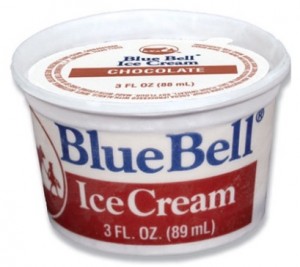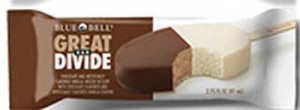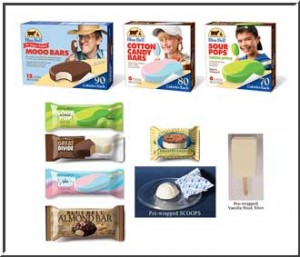Blue Bell ice cream will begin appearing on store shelves next week – four months after a deadly Listeria outbreak prompted a recall of all of its products and the temporary closure of its production facilities. Many of the illnesses were linked to contaminated single-serve ice cream products made for Blue Bell’s institutional clients.
Those at highest risk of Listeria include seniors, children, the frail and the immune compromised are served by these institutional clients which include hospitals, nursing homes, schools and retirement communities like the one where David Philip Shockley worked.
 Shockley, 32, is the plaintiff in a federal lawsuit filed May 19 against Blue Bell. He was an administrator at a Houston retirement community that was one of Blue Bell institutional clients. Because he suffers from ulcerative colitis, Shockley had been taking immunosuppressive medications since 2012. He had also been regularly snacking on Blue Bell ice cream products while he was at work.
Shockley, 32, is the plaintiff in a federal lawsuit filed May 19 against Blue Bell. He was an administrator at a Houston retirement community that was one of Blue Bell institutional clients. Because he suffers from ulcerative colitis, Shockley had been taking immunosuppressive medications since 2012. He had also been regularly snacking on Blue Bell ice cream products while he was at work.
One day, in late October 2013, he wasn’t feeling well. He had severe headache with nausea and light sensitivity. He lost consciousness, friends found him un-responsive. He was rushed by ambulance to the hospital where he was admitted to the intensive care unit in acute respiratory failure and septic shock suffering seizures and a fever over 106˚ F. He didn’t fully regain consciousness for six days, according to the complaint.
When he did he was unable to walk, talk, swallow, see properly or move much of his body. He was diagnosed with Listeria meningitis. He has permanent neurological damage.
The Blue Bell outbreak was first announced by health officials in March 2015, but as the investigation proceeded, a longstanding Listeria problem, causing illnesses as far back as 2011, was discovered.
Here is a timeline of key dates in the outbreak.
In January 2010, a Listeria case that will become the first of this outbreak occurs in Arizona or Oklahoma.
In March 2011, a Listeria case that will become the first case of this outbreak occurs at a Texas hospital that has not been named by state or federal health officials.
In May 2011, the second case occurs at the same Texas hospital.
On March 19, 2013 Listeria is found on the floor in front of a freezer at the company’s facility in Broken Arrow, Okla. during an inspection. It is not tested to determine if it is pathogenic, nor are procedures out in place to remediate it.
On April 19, 2013, Listeria is found on the pallet jack in the Broken Arrow kitchen. It is not tested to determine if it is pathogenic, nor are procedures put in place to remediate it.
On August 13, 2013 Listeria is found on the catwalk behind the flavor tank in Broken Arrow. It is not tested to determine if it is pathogenic, nor are procedures put in place to remediate it.
On October 18, 2013 Listeria is again found on the floor in front of the Broken Arrow freezer. It is not tested to determine if it is pathogenic, nor are procedures put in place to remediate it.
On November 12, 2013 Listeria is found in a tub in the Broken Arrow kitchen. It is not tested to determine if it is pathogenic, nor are procedures put in place to remediate it. In 2014, inspectors will find Listeria at Broken Arrow 10 times.
In January 2014, the first of five Kansas cases to be included in this outbreak is reported in a patient at Via Christi hospital in Wichita.
On January 13, 2014 health inspectors find Listeria at the Broken Arrow facility.
On January 20, 2014 health inspectors find Listeria at the Broken Arrow facility.
In March 2014, the second case is reported in Kansas.
On April 15, 2014, health inspectors find Listeria at the Broken Arrow facility.
On April 22, 2014 health inspectors find Listeria in three locations at the Broken Arrow facility.
On August 11, 2014 health inspectors find Listeria in two locations at the Broken Arrow facility.
In October 2014, three cases are reported; two in Kansas, one in Texas.
In November 12, 2014, health inspectors find Listeria at the Broken Arrow facility.
 Between august 29, 2014 and January 21, 2015 Blue finds Listeria in samples of Great Divide bars and Chocolate Chip Cookies manufactured at it s Brenham, Texas plant but distributes them into commerce.
Between august 29, 2014 and January 21, 2015 Blue finds Listeria in samples of Great Divide bars and Chocolate Chip Cookies manufactured at it s Brenham, Texas plant but distributes them into commerce.
In January 2015, a fifth case in Kansas is reported. At this point, eight people in two states have been sickened over a four-year period and three have died but health officials are still unaware that the illnesses have a common cause.
 On February 12, 2015 during routine testing at a distribution center, the South Carolina Department of Health & Environmental Control finds Listeria in two Blue Bell products- Great Divide Bars and Chocolate Chip Country Cookie sandwiches The products were manufactured at Blue Bell’s Brenham facility.
On February 12, 2015 during routine testing at a distribution center, the South Carolina Department of Health & Environmental Control finds Listeria in two Blue Bell products- Great Divide Bars and Chocolate Chip Country Cookie sandwiches The products were manufactured at Blue Bell’s Brenham facility.
The Texas Department of State Health Services is alerted and conducts its own tests on product samples collected from the Brenham facility. Listeria is again found in Great Divide Bars and Chocolate Chip Country Cookie sandwiches and also found in a single-serving ice cream product, Scoops, made on the same production line.
On February 19, 2015, Listeria is found in the Brenham facility.
On February 21, 2015, Listeria is found in the Brenham facility.
In early March 2015, health officials identify the Kansas cluster when they notice that two of the cases were both Via Christi patients. Using PulseNet, an inter-agency foodborne illness database, they match DNA “fingerprints” of rare Listeria isolates from the Kansas patients to those found in the ice cream samples.
On March 9, 2015, more Listeria is found in the Brenham facility.
On March 9, 2015, Via Christi hospital is alerted that Listeria has been found in Blue Bell products. It removes them from circulation and holds them in quarantine. It provides invoices to the Kansas Department of Health and Environment showing that the Blue Bell brand ice cream Scoops used in the patients’ milkshakes came from Blue Bell’s facility in Texas.
On March 13, 2015, the Centers for Disease Control and Prevention (CDC) announces an outbreak of listeriosis linked to Blue Bell ice cream served to patients at a Wichita hospital between January 2014 and January 2015. The outbreak had sickened five people, killing three of them.
Via Christi posts information on its website saying the hospital had no knowledge the ice cream was contaminated until it was notified by health authorities on March 9 and that it has removed all Blue Bell products from circulation.
Blue Bell posted a message on its website saying: “One of our machines produced a limited amount of frozen snacks with a potential listeria problem. When this was detected all products produced by this machine were withdrawn. Our Blue Bell team members recovered all involved products in stores and storage. This withdrawal in no way includes our half gallons, quarts, pints, cups, three gallon ice cream or take-home frozen snack novelties.”
Blue Bell CEO Paul Kruse tells The Houston Chronicle in a March 13 story that the machine used to make Scoops and other single-serve items had not been in operation for about a month and a half, putting its shutdown days if not weeks before South Carolina’s February 12 discovery of Listeria.
The outbreak has expanded from one to two states; Listeria, initially associated with one troubled manufacturing line at Blue Bell’s plant in Brenham, Texas, has been found in a product made at Blue Bell’s plant in Broken Arrow, Oklahoma prompting its closure; and the company has issued three recalls.
 A recall is issued for 10 Blue Bell products sold at retail stores and to Blue Bell’s institutional customers such as hospitals, nursing homes and school districts. They are: Chocolate Chip Country Cookie SKU # 196, Great Divide Bar SKU #108, Sour Pop Green Apple Bar SKU #221, Cotton Candy Bar SKU #216, Scoops SKU #117, Vanilla Stick Slices SKU #964, Almond Bars SKU #156, 6 pack Cotton Candy Bars SKU #245, 6 pack Sour Pop Green Apple Bars SKU #249, and 12 pack No Sugar Added Mooo Bars* SKU #343.
A recall is issued for 10 Blue Bell products sold at retail stores and to Blue Bell’s institutional customers such as hospitals, nursing homes and school districts. They are: Chocolate Chip Country Cookie SKU # 196, Great Divide Bar SKU #108, Sour Pop Green Apple Bar SKU #221, Cotton Candy Bar SKU #216, Scoops SKU #117, Vanilla Stick Slices SKU #964, Almond Bars SKU #156, 6 pack Cotton Candy Bars SKU #245, 6 pack Sour Pop Green Apple Bars SKU #249, and 12 pack No Sugar Added Mooo Bars* SKU #343.
On March 15, 2015, Kruse tells KAKE.com the machine used to make the recalled products wasn’t properly sanitized and is not currently in use.
The Texas Department of State Health Services tells Food Poisoning Bulletin that it does monthly inspections at Blue Bell’s Brenham facility. “We inspect these facility types monthly. Our last full inspection was February. We cited a couple minor issues but nothing related to this issue,” a spokeswoman told the publication.
Between March 13 and March 22 2015 , the Kansas Department of Health and Environment (KDHE) and the Kansas Department of Agriculture conduct tests on environmental samples from Via Christi’s kitchen and the Blue Bell products the hospital was holding in quarantine.
None of the environmental samples from the kitchen are positive for Listeria. But an unopened Blue Bell 3-ounce single serving ice cream cup is. That contaminated ice cream cup was made at the Blue Bell’s facility in Broken Arrow, Okla.
On March 18, 2015, health inspectors see condensate above a pint filler at the Brenham facility dripping directly into pints of mint chocolate ice cream. Pipes dripping into product is first mentioned in a 2009.
On March 22, 2015 the U.S. Food and Drug Administration (FDA) tells Blue Bell Listeria has been found in ice cream cups.
The second round of products Blue Bell recalled were made in Broken Arrow, Oklahoma.
On March 23, 2015 Blue Bell expands the recall to include ice cream cups. A statement on the company’s website says the contaminated cup was made in Broken Arrow on April 15, 2014. “This recall in no way includes Blue Bell Ice Cream half gallons, pints, quarts, 3 gallons or other 3 oz. cups,” the statement ends.
The Oklahoma Department of Agriculture, Food and Forestry (ODAFF) and the FDA begin an inspection of the Broken Arrow plant.
On March 24, 2015 the CDC, FDA , the Kansas Department of Health and Environment (KDHE) and the Kansas Department of Agriculture publicly announce their findings that no Listeria was found in swabs taken from the Via Christi hospital kitchen but the pathogen was found in an ice cream cup made at Blue Bell’s Broken Arrow plant.
On March 24, 2015, FDA inspectors find Listeria at the Broken Arrow plant.
On March 25, 2015, FDA inspectors find Listeria at the Broken Arrow plant.
On March 26, Food Poisoning Bulletin reports that the Oklahoma Department of Agriculture inspects the Broken Arrow plant eight times a year but dose not test for pathogens. The focus of the inspections is overall sanitation and the pasteurization and “no major problems have been discovered in these inspections,” the most recent of which took place February 12, 2015 and March 17, 2015, a spokesperson told the publication.
In Oklahoma, no illnesses have been linked to the Blue Bell Listeria outbreak, a spokesman for the Oklahoma Department of Health tells Food Poisoning Bulletin. Oklahoma had two cases of listeriosis in 2014 and one so far in 2015.
On March 31, health officials in Alabama tell Food Poisoning Bulletin that the FDA has not been to Blue Bell’s third location in Sylacauga, AL to test products there.
The Sylacauga plant was last inspected February 19, 2015, he tells Food Poisoning Bulletin. However, environmental swabs are not taken during those inspections, nor are products tested for specific pathogens. Instead, samples are tested for coliform and the standard plate count.
The third round of products recalled by Blue Bell were made in Broken Arrow, Oklahoma.
On April 3, the CDC reports that, using PulseNet, it has identified six listeriosis patients who were sickened by the same strain of Listeria found in the Blue Bell 3 oz. cup. Four of the six patients had been hospitalized in Texas for unrelated problems before developing listeriosis. Food history information is available for one patient who reported consuming ice cream in a Texas hospital before developing listeriosis. The Texas Department of State Health Services reports that the hospital had received Blue Bell brand ice cream cups.
The CDC advises consumers not to eat any products made at Blue Bell’s Broken Arrow plant. Blue Bell reports it has voluntarily suspended operations at the Oklahoma production facility.
On April 4, 2015, Blue Bell begins working with retailers to remove all products made in the Oklahoma production facility from the market.
On April 7, 2015, the FDA notifies Blue Bell that one of the samples it has collected in its joint inspection with Oklahoma health officials, a pint of Banana Pudding ice cream, has tested positive for Listeria.
Blue Bell announces a third product recall that includes ice cream and sherbet pints and half gallons made at Broken Arrow from February 12, 2015 to March 27, 2015.
On April 8, 2015 the CDC announces that further testing has confirmed that three of Texas cases are part of the outbreak. It does not name the hospital.
On April 20, 2015, Blue Bell recalls all of its products.
On April 21, the CDC announced the outbreak has spread to four states and includes 10 cases from Kansas, Oklahoma Texas and Arizona.
On April 24, 2015, Blue Bell halts production at all facilities and announces plans for an intensive cleaning and re-training program. “We intend to make a fresh start,” said Blue Bell CEO and President Paul Kruse.
On April 27, 2015 Blue Bell begins the plan.
On April 28, 2015 Blue Bell Major releases a statement saying floor repairs and potential work on ventilation systems at Blue Bell ice cream plants will be part of an intensive maintenance overhaul that could take months to complete. “We are committed to doing whatever it takes to get this right,” said Greg Bridges, vice president of operations for Blue Bell. “Our manufacturing facilities, especially the two in Brenham (Texas) are large and complex, so we anticipate this process will take some time.”
Health inspectors find Listeria at the Sylacauga plant.
On May 2, 2015 U.S. Senators Brian Schatz (D-HI), Dick Durbin (D-IL), Richard Blumenthal (D-CT), Dianne Feinstein (D-CA), Al Franken (D-MN), Kirsten Gillibrand (D-NY), and Amy Klobuchar (D-MN) call for full funding of the Food Safety Modernization Act in the wake of outbreak findings.
On May 7, the FDA releases inspection reports on Blue Bell’s facilities in Broken Arrow, Brenham,Texas and Sylacauga, Ala. The reports disclose Listeria findings and other food safety violations.
On May 19, PritzkerOlsen, a national food safety law firm that underwrites Food Poisoning Bulletin, files a lawsuit on behalf of David Philip Shockley.
On June 10, the CDC closes its investigation and declares the outbreak over.
On July 10, Blue Bell begins test production at its Sylacauga plant.
On August 14, Blue Bell trucks leave Sylacauga with ice cream to be delivered to a limited number of states.
On August 31, Blue Bell ice cream will be availlable at stores in Texas and Oklahoma.




